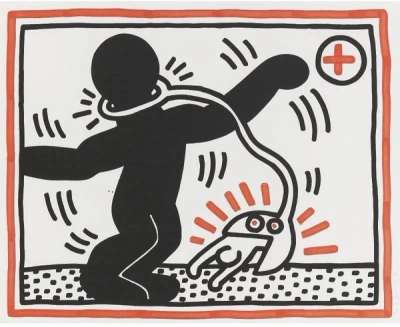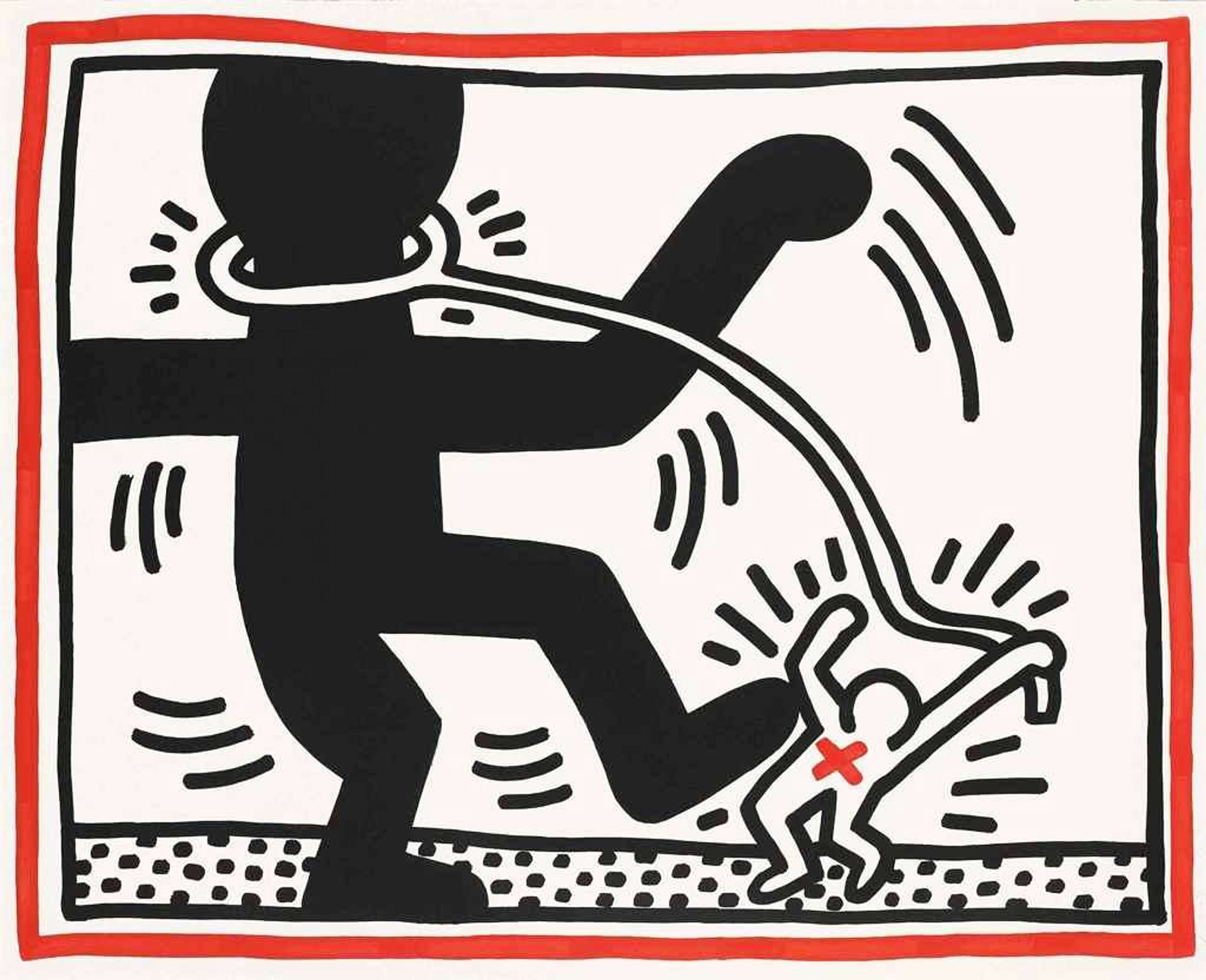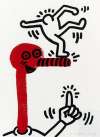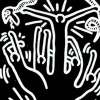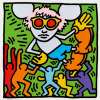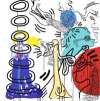Free
South Africa
Keith Haring's 1985 Free South Africa series captures the struggle of the black majority against the oppressive white minority in Apartheid South Africa, symbolized by a rope around the neck of the black figure. Radiating dashes evoke the energy of the fight, culminating hopefully with the black figure overcoming the white.
Keith Haring Free South Africa For sale
Free South Africa Value (5 Years)
Works from the Free South Africa series by Keith Haring have a strong market value presence, with 51 auction appearances. Top performing works have achieved standout auction results, with peak hammer prices of £60536. Over the past 12 months, average values across the series have ranged from £11452 to £29105. The series shows an average annual growth rate of 11.64%.
Free South Africa Market value
Auction Results
| Artwork | Auction Date | Auction House | Return to Seller | Hammer Price | Buyer Paid |
|---|---|---|---|---|---|
 Free South Africa 1 Keith Haring Signed Print | 24 Apr 2024 | Bukowskis, Stockholm | £9,775 | £11,500 | £14,000 |
 Free South Africa 2 Keith Haring Signed Print | 30 Oct 2023 | Bonhams New York | £12,750 | £15,000 | £19,000 |
 Free South Africa 3 Keith Haring Signed Print | 26 Apr 2023 | Bukowskis, Stockholm | £12,325 | £14,500 | £18,000 |
Free South Africa (complete set) | 29 Jun 2022 | Bonhams New Bond Street | £51,000 | £60,000 | £80,000 |
Sell Your Art
with Us
with Us
Join Our Network of Collectors. Buy, Sell and Track Demand
Meaning & Analysis
Looking to tackle South African Apartheid, Haring’s Free South Africa series shows how his signature artistic style is used to depict complex social issues. Printing and distributing around 20,000 Free South Africa posters in New York City in 1986, Haring worked tirelessly to mobilise support against apartheid.
In a journal entry from March 28, 1987, Haring wrote that “Control is evil. All stories of white men’s ‘expansion’ and ‘colonisation’ and ‘domination’ are filled with horrific details of the abuse of power and the misuse of people.”
Each print in the series features two stick figures in a struggle with one another, and as the series progresses, we see this struggle unfold. Using his bold, linear style, Haring represents the relationship between the black majority and white minority in South Africa during years of institutionalised racial segregation. The black figure on the left is rendered much larger than the white figure, symbolising the substantial disparity between the black majority and the few white people that had political and social power at the time. Haring clearly conveys this inequality of the white man’s power by showing the white figure with a rope around the black figure’s neck.
The presence of radiating lines and dashes work to bring movement to each image in the series, conveying the rage of the black figure and worry of the white figure who is about to be crushed. Haring playfully offers the viewer a glimpse of hope for the future by depicting the black figure crushing the white figure, marked by a red X, that represents this inequality.


